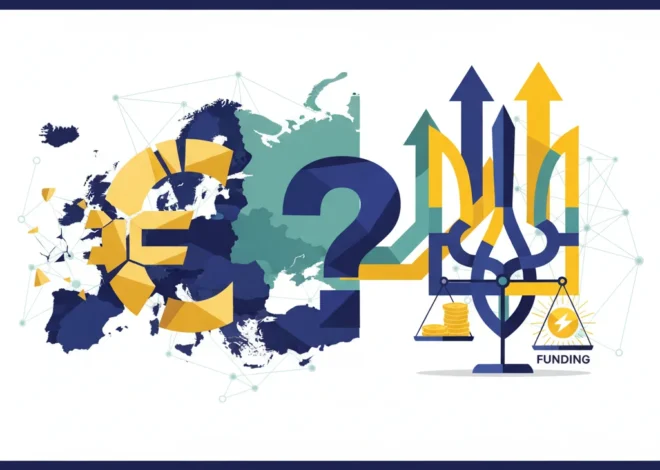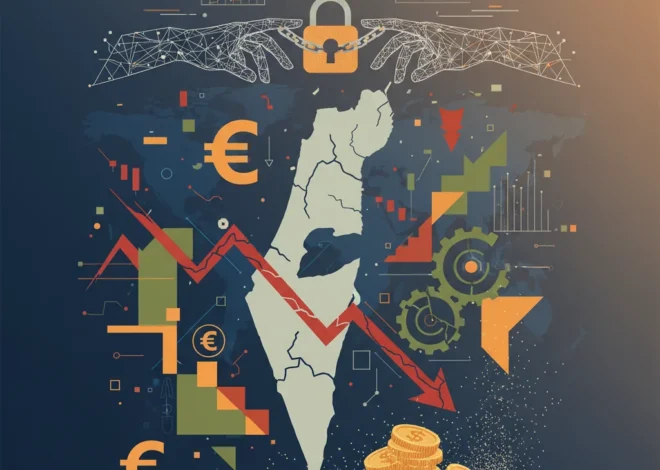
Beyond the Barrel: Why Sanctioning Refineries is the West’s Next Move in the Economic War on Russia
The Sanctions Paradox: How the West is Inadvertently Funding the War in Ukraine
More than two years into the full-scale invasion of Ukraine, an intricate web of Western sanctions has been spun to cripple Russia’s war machine. At the heart of this economic strategy is the G7’s price cap on Russian crude oil, a policy designed to starve the Kremlin of the petrodollars that fuel its military. Yet, despite these measures, Russia’s oil revenue remains stubbornly high, and a perplexing reality has emerged: the West is still a major consumer of energy derived from Russian fossil fuels. This isn’t a failure of intent, but a failure of design—a critical loophole that has turned a handful of countries into colossal laundering operations for Russian oil.
The mechanism is deceptively simple. While the direct import of Russian crude into the EU and other allied nations is largely banned, the sanctions do not extend to refined petroleum products—like diesel, jet fuel, or gasoline—that originate from Russian crude but are processed in a third country. This has created a booming and highly profitable new trade route. Tankers laden with Russian Urals crude, sold at a discount, bypass Europe and head for massive refineries in India, Turkey, and China. There, the crude is transformed. Through the refining process, its “country of origin” is legally changed. These newly minted fuels are then sold, often at a premium, back into the global market, including to the very European nations that have banned direct Russian imports.
According to analysis from the Financial Times, this sanctions arbitrage has become a cornerstone of Russia’s economic resilience. It allows Moscow to maintain high production levels, find willing buyers, and continue financing its aggression. For the global economy, it has created a bifurcated and less efficient energy market, while for investors and business leaders, it introduces a new layer of geopolitical and compliance risk that is becoming impossible to ignore.
Mapping the “Shadow Pipeline”
To understand the scale of this operation, it’s crucial to visualize the flow of capital and resources. What was once a relatively straightforward supply chain has become a complex global shell game. The table below illustrates the journey of Russian oil from its source to its ultimate, and often surprising, destination.
| Stage | Description | Key Actors | Financial Implication |
|---|---|---|---|
| Crude Oil Export | Russia exports its Urals crude oil, often using a “shadow fleet” of tankers to obscure origins and bypass insurance restrictions. | Russian oil companies (e.g., Rosneft), commodity traders, tanker operators. | Sold at a discount to the global Brent benchmark, but still well above Russia’s production cost. |
| Third-Country Refining | The crude is processed in countries that have not joined Western sanctions, such as India, China, and Turkey. | Indian refineries (e.g., Jamnagar), Chinese state-owned enterprises, Turkish refiners. | Refiners capture a significant margin by buying cheap crude and selling expensive refined products. |
| Product Re-Export | The refined products (diesel, jet fuel, etc.) are now legally considered of Indian, Chinese, or Turkish origin. | The same refineries and international commodity trading houses. | Products are sold at full market price, often back to Europe and other G7 nations. |
| Final Consumption | European consumers and businesses fill their vehicles and aircraft with fuel that began its life in a Russian oil field. | European energy companies, airlines, logistics firms, consumers. | The price paid indirectly supports the entire supply chain, including the initial purchase from Russia. |
This redirection of trade has had a tangible impact. India’s imports of Russian crude have skyrocketed, increasing by more than 1,500% since the invasion (source). Subsequently, its exports of refined products to the EU have surged, effectively making it a back door for Russian energy into Europe. This isn’t just a minor leak in the sanctions regime; it’s a gaping hole that threatens to render the entire policy ineffective.
The Solution: Moving Up the Value Chain
If sanctioning the source (crude oil) has been circumvented, the logical next step is to sanction the enablers: the refineries themselves. The proposal gaining traction in policy circles is to implement secondary sanctions on the non-Russian facilities that process significant volumes of Russian crude. This would be a dramatic escalation of the economic war and would directly target the linchpins of the shadow pipeline.
How would this work? The West, led by the U.S., could prohibit any entity that processes Russian crude from accessing the Western financial system. This would mean cutting them off from U.S. dollar transactions, the SWIFT messaging system, and Western banking and insurance services. For a massive refinery in India or Turkey that does business globally, being locked out of the dollar-based financial ecosystem would be a death sentence. Their ability to finance operations, pay suppliers, and sell products on the international market would be severely crippled.
This approach has a strong precedent. It was a key component of the sanctions that brought Iran to the negotiating table over its nuclear program. By targeting not just the country but any company worldwide that did business with it, the U.S. leveraged the centrality of its financial system to enforce its foreign policy. Applying this playbook to the refiners processing Russian oil would effectively force them to choose: do business with Russia, or do business with the rest of the world. As one analyst noted, “It would force a reckoning for these refiners and the governments that host them” (source).
Implications for the Global Economy, Investors, and Business Leaders
Closing this loophole would not be without consequences, and the ripple effects would be felt across the global economy. Business leaders and financial professionals must prepare for a new phase of market dynamics.
- For Investors: A crackdown on third-country refineries would introduce immense volatility into the energy stock market. Shares of the targeted refining companies would plummet. We could see a short-term spike in the price of diesel and jet fuel as a significant source of supply is disrupted, benefiting oil majors with non-Russian upstream assets. Investors in emerging market funds with heavy exposure to India or Turkey would need to reassess their geopolitical risk.
- For Business Leaders: Companies with global supply chains would face immediate challenges. The cost of fuel for transportation and logistics could rise sharply. More importantly, the compliance burden would increase exponentially. Businesses would need to implement more robust due diligence, potentially using financial technology and even blockchain-based solutions to trace the ultimate origin of their energy supplies to avoid falling foul of a complex and expanding sanctions regime.
- For the Financial Sector: Banks and financial institutions that underwrite commodity trading would be on the front lines. They would need to ensure their clients are not dealing with sanctioned entities, increasing compliance costs and legal risks. The threat of secondary sanctions could lead to a broader de-risking from certain regions, impacting global capital flows.
The core challenge is one of political will. Sanctioning major refineries in strategic partner countries like India is a diplomatically fraught exercise. It risks pushing them closer to the Russia-China axis and could be viewed as an overreach of Western economic power. However, the alternative is to continue a policy that is demonstrably failing to achieve its primary objective.
Conclusion: A Necessary Escalation
The economic war against Russia is at a crossroads. The initial wave of sanctions, while impactful, was built with a loophole that Russia and its partners have expertly exploited. The “laundering” of Russian crude oil through third-country refineries has blunted the West’s most powerful non-military weapon and continues to line the Kremlin’s coffers.
Targeting these refineries is an aggressive, complex, and risky move. It will test diplomatic relationships, create market volatility, and likely lead to a painful, albeit temporary, increase in energy prices. But it may be the only viable path to making the sanctions truly bite. For investors, policymakers, and citizens alike, the question is no longer whether we can afford to take this step, but whether we can afford not to. The intersection of global finance, international law, and geopolitical conflict has never been clearer, and the next move will determine the effectiveness of the West’s long-term economic strategy.


